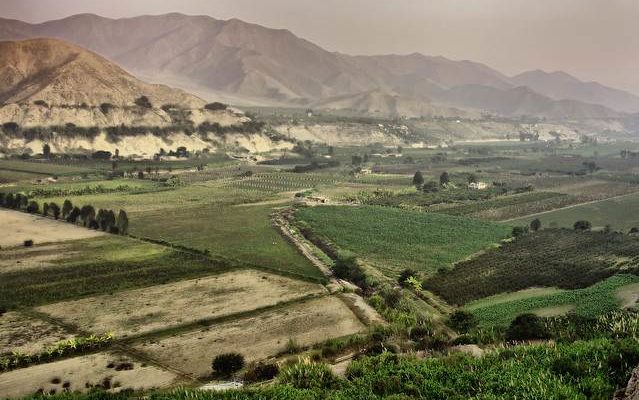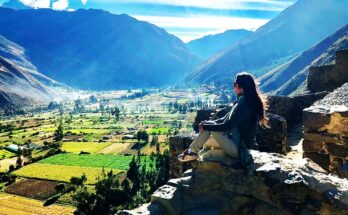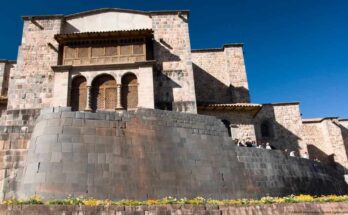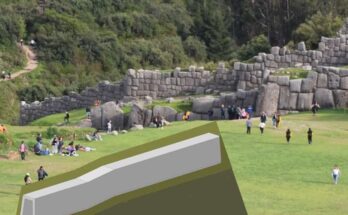Lima
Lima is the capital of Peru, is right there where most Peruvians live, is also the main place of work and where high political and economic powers of the country are.
Lima is a very important and respected not only for Peru but for all Latin American countries since it was the first place in South America where the Spanish conquerors, decided to stabilize their new home and after several years of struggle, the whole Peru independence was achieve.
Today, January18th is the 475th celebration of foundation and Lima has a party. It is celebrated with serenades, many native music, various activities and brings out the best of his repertoire both in gastronomy and exportation products and as a sample the Pisco, the best liquor that has been made in South American lands and compared with international drinks like whiskey.
In the capital, highlighting its many mansions decorated by beautiful colonial balconies that are national treasures and which are being gradually restored by the municipality. Lima has a variety of places to learn, however today is its anniversary and you are invited to know more about their streets and their history as well as enjoying the activities programmed.
Mala
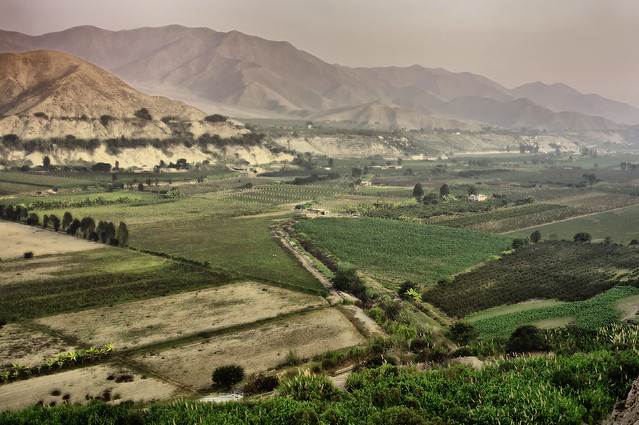
The district of Mala is one of the sixteen that make up the province of Cañete, located in the Department of Lima, a member of the Lima region in Peru. It occupies an area of 129.31 km2 and its population according to 1993 census was 18,700 inhabitants, of whom over 15,000 lived in urban areas. The creation of the district is the time of the independence of Peru.
The district, which belongs to the Costa or Chala Region, is the city of San Pedro de Mala, situated at a height of 32 meters above sea level. His feast day is celebrated in San Pedro, on 29 June. Among the traditional dishes of this district is to highlight the tamale Malena, the fried pork, raw soup (rehydrated dried potato soup with noodles, a kind of watery carapulcra, also called “spot chest”), the carapulcra, the spicy malen, and Chapanas, a sweet cassava.
Casttle of Chancay
Perhaps one of the active tourist attractions places so far and where you can host at very low prices and a few hours from the Peruvian capital. The famous Castle of Chancay with medieval style building and was built in the forties.
Built on a rocky cliff on the beaches of Chancay and was developed thanks to Consuelo Amat y León Boggio, great granddaughter of the Viceroy Don Manuel Amat y Juniet Ponelle and Almerch.
Located in the province of Huaral, Chancay district whence the name of the castle come from and it can only be reached by land from the capital, the journey takes a couple of hours.
The Viceroy Amat’s great-graddaughter, Doña Consuelo, decided to build first the Hotel Villa Shell in 1935 and served as an obligatory stopping place for vacationers seeking an isolated place from Lima, the capital, for a weekend. However and due to the large volume of visits, the building of the castle began in 1940 and was designed by the same Consuelo.
Opposite the castle and the sea, lies buried since 1889 the Chilean frigate La Covadonga, making the castle and its surroundings, an esteemed place rich in history.
Today the castle is multitudinously visited by domestic and foreign tourists, offering lodging and there is even a camping area.
The Real Felipe
Located in Callao, Real Felipe Fortress is a building that was built by the Spanish in the eighteenth century during the government Viceroy Jose Antonio Manso de Velasco and Manuel de Amat y Juniet. It was built with the aim of protecting the port of Callao against attacks by buccaneers and pirates.
Its name is an homage to King Philip V of Bourbon, which was later renamed by José de San Martín as ” Independence Castle” and recover its name at the end of the Republican era in 1925.
During the colonial era, this architecture and two other more: “San Rafael” and “San Miguel” Forts were jointly known as Castles of Callao.
The building has an irregular pentagonal shape and an area of 70 000 m2. It has a stronghold in each of its five corners who were baptized with names like “The King”, “The Queen”, “San Felipe”, “San Carlos” and “San Jose”. Nowadays, Real Felipe is a touristc place and the headquarters of the Army Museum of Peru
Between the strongholds Rey and San Jose we can find the Main Entrance or The Honor entrance. It was facing the old “Royal Road” from Lima to Callao and in addition it had a drawbridge to cross the water moat that initially surrounded the fortress.
In the back of the fortress we can find “The Forgiveness Door” whose name was given for the deserters asking forgiveness.
Since 2008 the fortress has a convention center, an auditorium with capacity for 1500 attendees, press room, restaurants and stalls for handicrafts.
Chanchamayo
Chanchamayo province is located in the Junin department and is an area belonging to the high jungle of Peru, also known as Cloud Forest and its exact location correspond to the eastern side of the Andes. Starting from Lima and with a good mean of transportation, you can get to this imposing paradise in a period of 6 to 8 hours of travel.
Possessing prodigious land, Chanchamayo is one of the places where the best coffee is produced in Peru and its surrounding areas are possessors of majestic natural resources of flora and fauna, typical to the jungle and waterfalls and indigenous villages.
We can mention the major tourist attractions in the area like The Bridal Veil, Pichanaki, Kimiri Bridge, Profile of an Indian native, Bayoz Waterfall and other attractions more.
If you get to know this wondrous land, be sure to taste its dishes as important as Samaño roast, and Cupte, Deer Steak, Cesina with Tacacho and Chicharrón and Cebiche made of Doncella (a fish).
Huancavelica
Initially founded as Villa Rica de Oropesa in the year 1751, Huancavelica is located in central Peru, exactly in the west of the Andes and is bordered by the Rio Ichu a tributary to the mighty Mantaro.
In pre-Inca times, Huancavelica was known as the region Angaraes and Chanca. The etymology of the word Huancavelica has several versions, but the most often cited comes from the Quechua Wanka Willka supposedly ‘Sacred Stone’, although this interpretation is inconsistent with the Quechua grammar. Founded on August 4, 1572 by the Viceroy Francisco de Toledo by the name of “Villa Rica de Oropesa”, a name which referred to the sustained economic boom mineraje at that time. Although minerals are still extracted around this city, Huancavelica is located in the center of one of the areas of greatest poverty rate in the country.
This city is characterized by the Inca culture and Spanish left on their journey through this place. For example they celebrate the traditional festivals and religious customs. Also excels in cuisine with local dishes such as tripe and “Pachamanca” (barbecue).
Huanuco
Located in north-central part of the country and mountain and jungle climates, this department was created on January 24th , 1869. Northward direction Huanuco borders on departments of La Libertad and San Martin, eastwards with Loreto, Ucayali and Pasco in south direction with Pasco and on the west, borders Lima Ancash and Pasco.
Among the main tourist attractions of this charming valley, we can find its beautiful Cathedral, the Main Square and the imposing churches of San Francisco, Cristo Rey and San Sebastian. It is important to note that the latter is the only sculpture in the world that has the martyr with pox spots throughout the body.
One of the most important views that draw the attention of Huanuco, is a serie of hills and mountains that shape the so-called Sleeping Beauty. It is shaped like a laid woman. It starts a beautiful legend of the colonial era and is located exactly in Tingo Maria. Another attraction is the Cave of the Owls that is located in the famous National park.
If we talk about history then we can mention the town of the Perricholi, Tomay Kichwa and where is the house of the renowned writer Enrique Lopez Albujar.
In La Union we can find thermal water like those of Conoc and Turipampa, which are very favorable for some illness. What’s more, now you can enjoy the new tourist circuit in the Huanuco region that is located in province Lauricocha and you can see Yacus, Yarumayo landscapes among other tourist attractions that we invite you to know today.
Juliaca
Located at an altitude of 3824 meters above the sea level in the Collao Plateau and northwest of Lake Titicaca,in the Province of San Roman in the Department of Puno and initially known as the Trade or Transit Village when it was created by Simón Bolívar in 1826 and is also known as the “Windy City” because of the presence of winds in the highland plateau and is completely recommended to travel wrapping up warm to withstand the low temperatures at night, especially at the winter time. Juliaca has a population of 218,485 inhabitants.
Its name Trade or Transit Village is because it is a obliged path for all the travelers who go by land to this region, ie, Puno, Cusco, Lima, Arequipa and even the neighboring country of Bolivia. Going to the center of the city is very simple because there are many accessed vias: by land and by air and there is a train station.
At Plaza Bolognesi, you can find a number of dealers offering socks, sweaters, scarves, hats, gloves, and ponchos made of alpaca wool, sheep, etc.. The inhabitants manufacture large quantities of knitting , for this reason is also known as “Knitting City”.
Among the most important holidays, we can mention to San Sebastian on January 20, carnivals and the Virgin of Mercedes to be held on September 24.
La Esperanza
Trujillo can be found in different districts and one of the most populated undoubtedly La Esperanza, a total of 150 830 inhabitants and an area of 18.64 km2.
In the neighborhood of La Esperanza we can always find two main avenues: Nicolas de Pierola and Tupac Amaru.
The district’s history dates back to late 1961 when it was recognized as slums and known as the “Huaca la Esperanza” and it is not until the year 1970 approving comprehensive legislation in the area, while its first inhabitant occurred in 1983 when Don Teodoro Espinoza was the owner of the farm “Blade Hope,” then I get an ownership society employing the hectares he had to grow and work.
However, having all the privileges that now has not been easy for local families to the area, bought land and many others invaded sparking serious problems with authorities and law enforcement until the state provided them with facilities for legalizing their land and possessions.
Today and with nine districts, two residential areas and 15 settlements and also the Industrial Park of Trujillo, La Esperanza is a solid and consolidated district thriving with people who is always in search of greater opportunities and welcomes its visitors lot of affection .
One of the places you should know when visiting Trujillo.
Madre de Dios
A piece of sky fell on the Peruvian jungle and the fruit of his masterful ways and whimsical combinations of flora and fauna, we can speak of Madre de Dios which is full of life where you go.
Its capital is Puerto Maldonado, and is an indispensable path in getting to know various national parks and reserves that are now protected and encourage mass tourism. Today we can see that its two main economic activities are the extraction of chestnut and ecotourism, reaffirming once again the commitment to environmental stewardship that includes this land of vast forests and rivers.
Among the most recommended places to see are the Forest of the Manu of that we have already talked on previous occasions and which houses an impressive array of birds and mammals, and currently holds an impressive record with more than 324 different species of birds seen in only one day.
Another impressive sight is the Tambopata National Reserve – Candamo again is another place with an unbeatable record worldwide and is among birds, mammals and insects, there are innumerable different species of butterflies. In the Bahuaja Sonene National Park we can see animals like the swamp deer and the maned wolf are not as well known as the harpy eagle, the bush dog, the black caiman, giant otter and the giant anteater, species currently in danger of extinction.
The perfect place to see birds such macaws, parrots, herons and toucans is Lake Sandoval that is only 10 kilometers from Puerto Maldonado.
Palomino Islands
If there is a new destination to know in Peru, especially in the Constitutional Province of Callao, near Lima, is the group of islands that is located facing the Sea of Grau and form the Palomino Islands.
In this area, there is a large population of seals and seabirds. Recently it has become a rich touristic place.
Palomino Islands are formed by four islands located 12 miles away from Chalaco port and to the west of the island called San Lorenzo.
In addition to appreciating the families of sea lions, one can see large numbers of seabirds such as gulls, boobies, pelicans, and Guanaye Chuit.
Two tourist attractions mix nature and human work. The first is a huge lighthouse and not using that sits on top of the island and provided guidance to ships and steamers that frequented the beaches and port of Callao. But the most striking attraction is a large passage of water known as the Cathedral of the Palomino Islands.
There are several tourist agencies that will allow to know a new tourist attraction that you will not regret.
